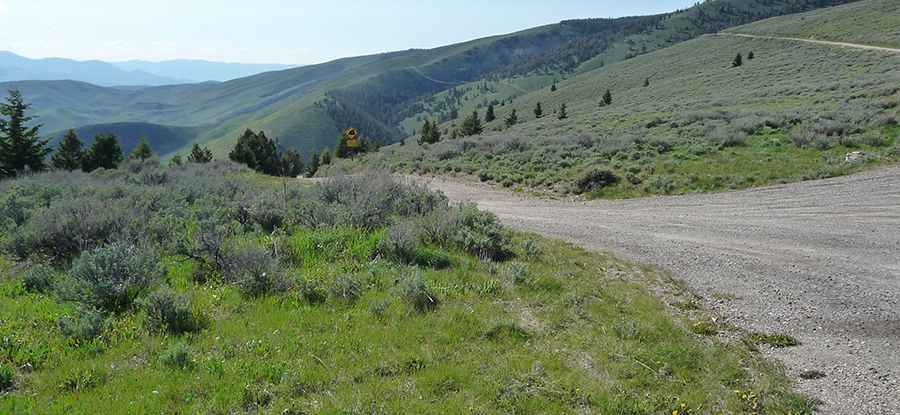Breathtaking scenery on the road to Lemhi Pass (Idaho-Montana)
Lemhi Pass is a high mountain pass at an elevation of 2.250m (7,381ft) above sea level, located on the border of Idaho and Montana, in the USA.

Where is Lemhi Pass?
Located within the Salmon-Challis National Forest, the pass links Lemhi County (in Idaho) and Beaverhead County (in Montana).
Can you drive over Lemhi Pass?
Set high in the Beaverhead Mountains of the Bitterroot Range in the Rocky Mountains, the road to the summit is called Lemhi Pass Road (in Montana), and Lewis and Clark Highway (in Idaho).
Is Lemhi Pass road paved?
It’s a beautiful rural gravel road that follows one of the great events of US and world history. Strongly advised a high-clearance vehicle on the road: some sections may be deeply rutted and others very rocky. You'll want to be sure you have a good spare tire, and equipment to change a tire if needed. The last four miles of road below the pass are quite narrow - a single driving lane. Watch for oncoming traffic and be prepared to use a turnout, or back up if you meet a vehicle. Keep in mind that generally, downhill traffic has the right-of-way.
Is the road to Lemhi Pass worth it?
Tucked away on the Montana-Idaho border, another road, Warm Springs Road, passes just west of the pass's high point. The weather is generally cool and unpredictable. It can snow at any time of the year. Thunderstorms with lightning, strong winds, and rain or hail are likely in the summer months. It is remote and don't expect any services. Watch out for cattle and moose that often wander onto the road. The area contains the richest deposits of thorium discovered in the United States. The drive is very scenic and will take you through breathtaking scenery on a journey back in time. The landscape at Lemhi Pass is very much like it was 200 years ago. You will find native sagebrush and bunch grasses, edged with patches of douglas-fir and lodge pole pine trees.
Why is it called Lemhi Pass?
The drive will take you through breathtaking scenery on a journey back in time. At the pass there are historical markers and information. In 1805, the Lewis and Clark expedition first saw the headwaters of the Columbia River. The pass was named in 1855 by Mormon missionaries for King Limhi, a character from the Book of Mormon. This pass played a role in the Lewis and Clark Expedition's journey across the continent. Read more about their discoveries and the routes that became today's roads: From Expedition Routes to Asphalt: Lewis and Clark's Mountain Pass Discoveries.
Pic: Rich McCrea